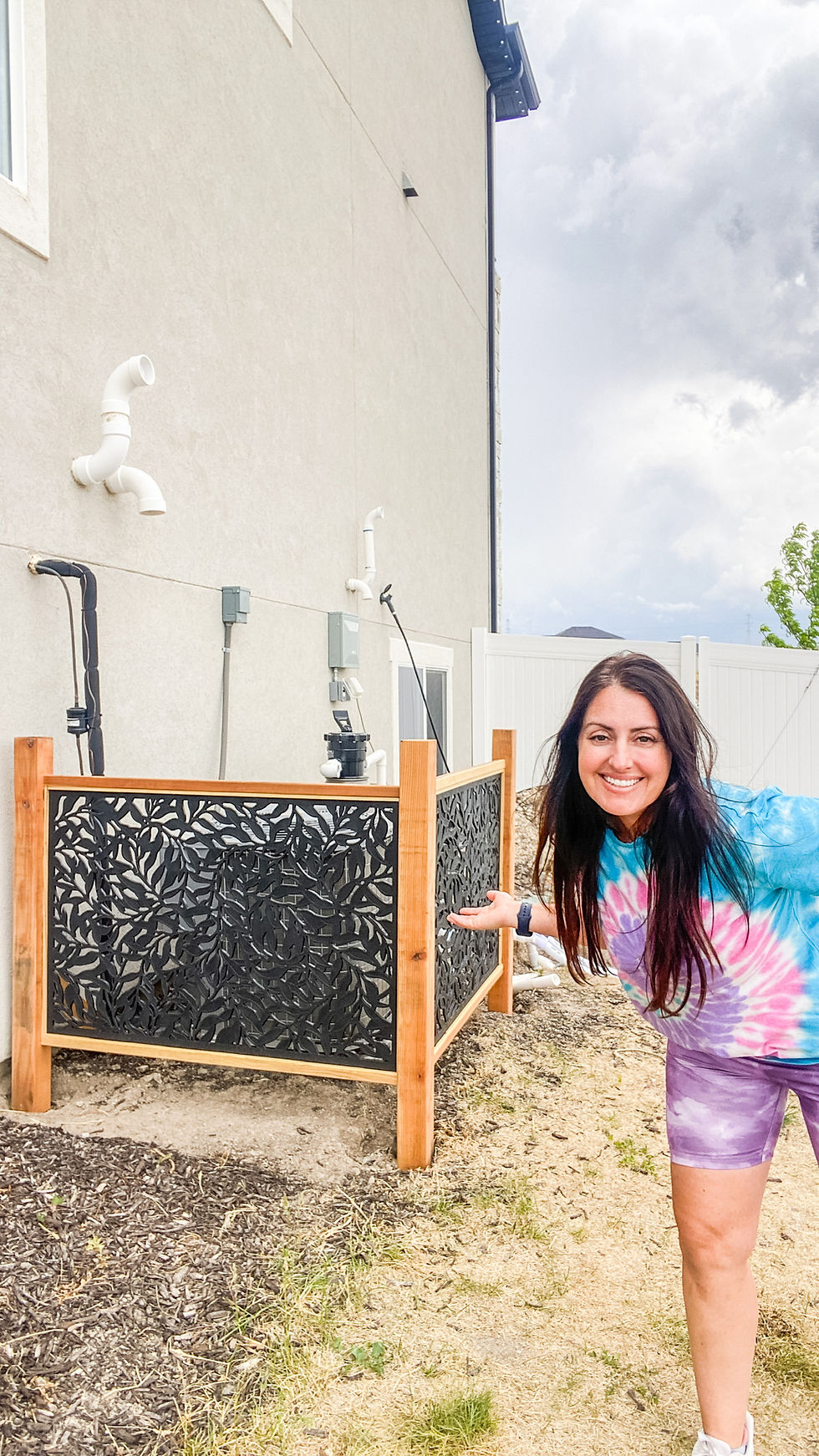Stop Tripping: The Custom Vacuum Cabinet I Built for Under $100
- Brandi
- Oct 3
- 3 min read
I don't know about you, but my stick vacuum was an absolute nightmare. It was constantly leaning against a wall, taking up valuable closet space, and frankly, it looked messy. Custom built-ins cost a fortune, but I realized I could get the same professional look with a little bit of plywood magic and a weekend of work!
This project was surprisingly simple and saved me thousands compared to hiring a carpenter. I used all DAP products in this build! Everything is linked below.
The Build: A Plywood Box, Total Transformation

All that was needed for this cabinet was just one sheet of plywood from Home Depot, trim and glue. This single sheet of plywood served as the primary material for constructing a sturdy and functional cabinet. To begin the project, I had the sheet cut into three 16-inch wide strips at the store, which would serve as the sides, top and bottom of the cabinet. This strategic cutting not only optimized the use of the plywood but also provided me with the essential components needed to create the main "box" structure of the cabinet. The dimensions I chose for the cabinet were 48 inches tall and 36 inches wide, striking a balance between ample storage space and a size that would fit well in the intended location. The height of 48 inches allows for easy access to the shelves while still being tall enough to provide a substantial presence in the room. After cutting the strips, I proceeded to attach the sides to form the vertical structure of the cabinet. To enhance the functionality of the cabinet, I built a base that would elevate it off the floor. This was an important consideration, as I wanted to ensure that the cabinet was positioned clear of the HVAC vent located on the floor. By raising the cabinet, I not only avoided any obstruction to airflow but also created a visually pleasing line that aligned with the height of the baseboard in the room.

To assemble the box and base, I utilized DAP Wood Glue, known for its strong bonding capabilities, which helped to reinforce the joints between the different components. Additionally, I used pocket holes and screws to secure the pieces together firmly. This method of assembly not only provided a clean and professional finish but also added to the overall durability of the cabinet. The pocket holes allowed for a neat appearance, as they are hidden from view once the assembly is complete, contributing to a streamlined aesthetic. Overall, the construction process was straightforward yet rewarding, as I transformed a simple sheet of plywood into a functional piece of furniture that would serve a variety of purposes in the home.


I had one strip of plywood left, which I decided to cut in half to create two uniform doors for the cabinet. This maximized material use and ensured a balanced design. For the hinge attachments, I used a Kreg jig cabinet hole cutter for precise holes, allowing the slow-close hinges to fit snugly. These hinges enhance user experience by closing gently and quietly. The frame was built with wood glue and 1x2s, providing strength and stability. Careful alignment was crucial for a square and level assembly, ensuring proper door operation. Overall, the choice of materials and hardware, especially the slow-close hinges, transformed the cabinet into a more elegant and practical piece of furniture, improving both usability and aesthetic appeal.
The secret to making a simple plywood box look custom? Trim!
I purchased small, pretty trim pieces and attached them to the front edges using a pin nailer and lots of DAP wood glue. The glue created an incredibly strong bond, securing the trim and adding dimension that instantly elevates the look from basic storage to built-in furniture.
The Professional Finish & Charging Hack
To get that seamless look (and hide any small gaps or nail holes), DAP wood filler was essential. I filled all the pin nail holes and any imperfections along the edges, sanded it down smooth, and then finished the entire piece with a rich stain and a durable seal.
Here’s the game-changer: I purposely built the frame around an existing wall outlet. This means when I slide the vacuum in, it automatically plugs in and charges—no messy cords dangling or having to move the cabinet!
If you're looking for a project that delivers maximum impact for minimal investment, this is it. Go grab that plywood, some trim, and your favorite DAP products, and give that vacuum the beautiful home it deserves!
Everything linked HERE

























Comments